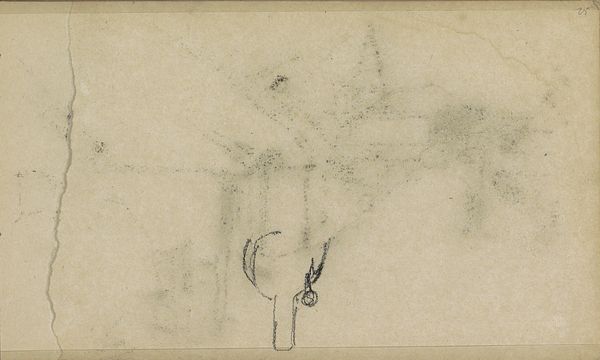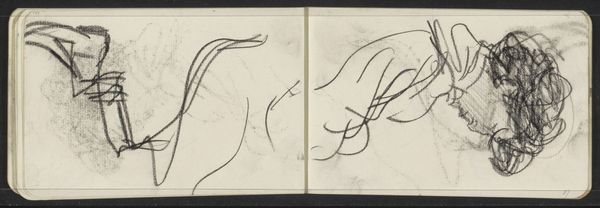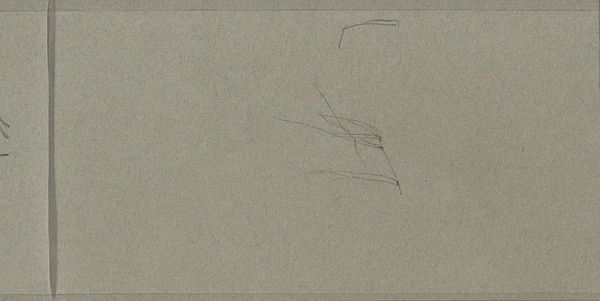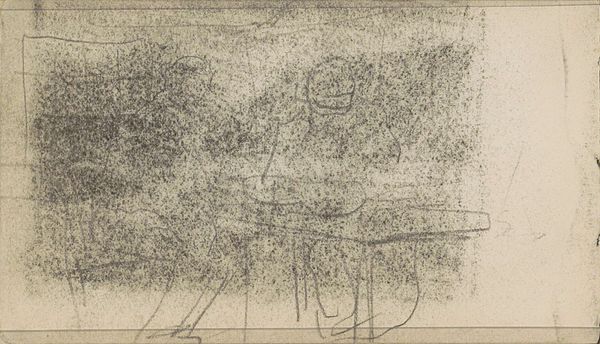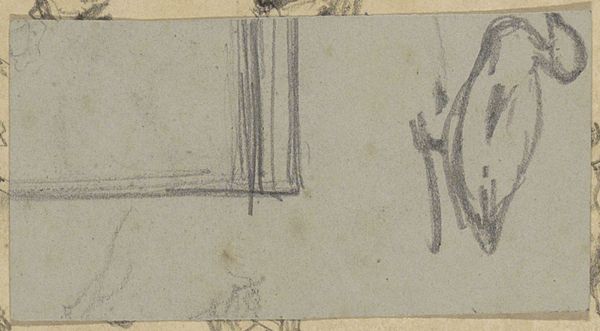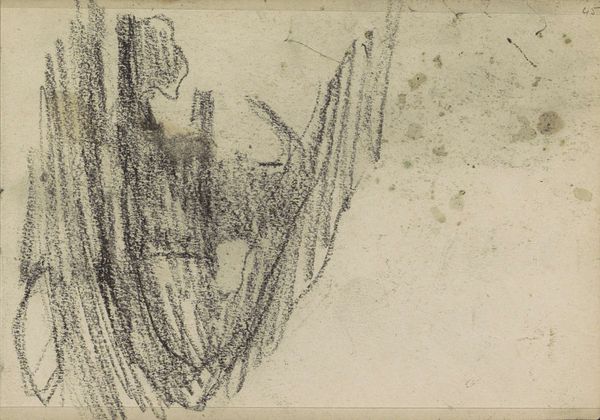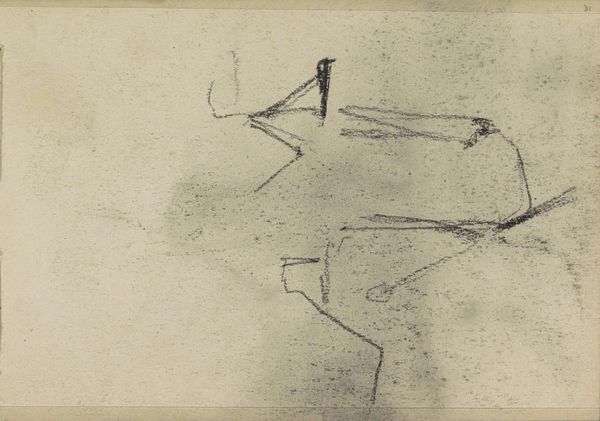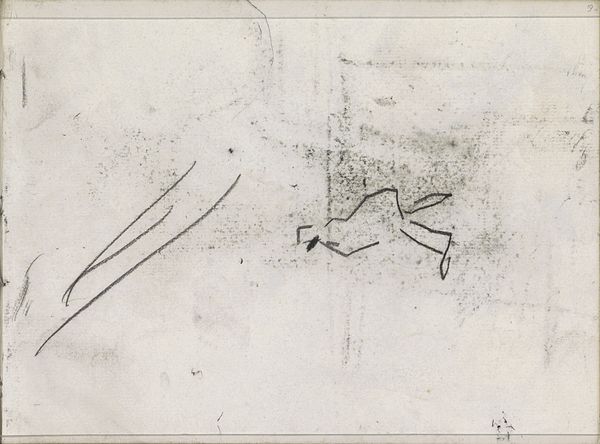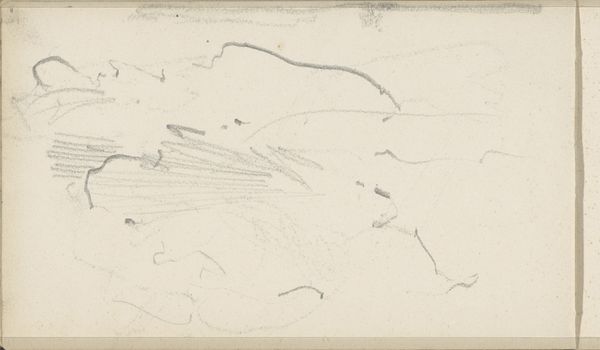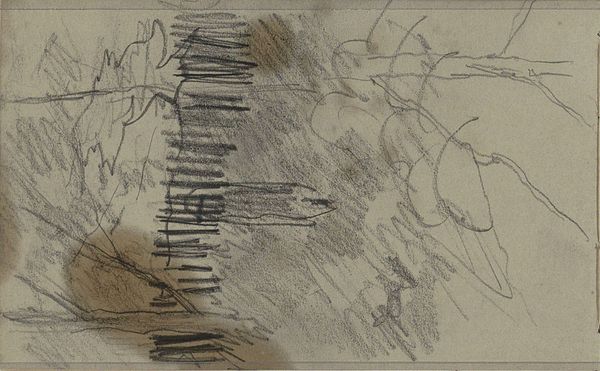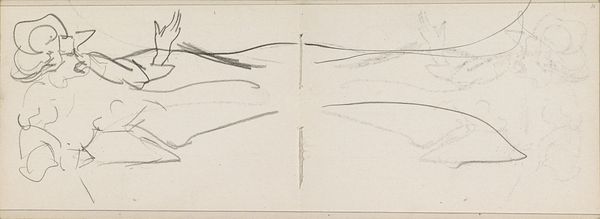
Copyright: Rijks Museum: Open Domain
Curator: This drawing by Isaac Israels, dating from sometime between 1875 and 1934, captures a standing woman in profile, accentuated by a prominent hat. Editor: It has a sense of immediacy to it, doesn't it? A captured moment, with bold, somewhat frantic strokes that feel quite modern, despite the historical context. The overall impression is…incomplete. Curator: Indeed, the Rijksmuseum holds this artwork, showcasing Israels’ adeptness with pencil drawing, typical of the Impressionist style he explored. There’s an intimacy created by the seemingly unfinished state. Editor: I wonder about the context surrounding it. Was it a study for a larger painting, perhaps? And why present her unclothed? There's an undeniable power dynamic at play in representing a female form in this manner, even in a sketch. Curator: It likely served as a study; Israels often made quick sketches. Consider, however, how the market and reception of art shape artists' choices; his subjects are often women in public spaces, hinting at themes of modern urban life, yet fitting within bourgeois sensibilities of the period. The woman's hat, and her nudity present a sort of paradox in the impression Editor: Right, that clash. Was this supposed to challenge norms, or reaffirm them? The rapid strokes, for instance, feel liberating, but the exposed body might perpetuate viewing women as objects. Did Israels consider that as an artist, did he grapple with representation? Curator: I imagine that to truly answer that we have to look into more than just this piece. Israels inhabited a society steeped in artistic traditions but was also engaging with evolving modern life. How that society viewed women obviously played into it. Editor: So, the politics of viewing – how the viewer participates in assigning meaning – is what we're really digging into. Something a bit more critical than what one might initially notice. Curator: Absolutely. Considering both the socio-political context and his artistic practice are crucial to gaining a deeper understanding. Editor: It makes me see the drawing beyond just a study of form and shadow—it’s also an inquiry into how women are seen, and see themselves within the public sphere. A moment captured with both intimacy, artistic sensibility, and the male gaze of the era.
Comments
No comments
Be the first to comment and join the conversation on the ultimate creative platform.
